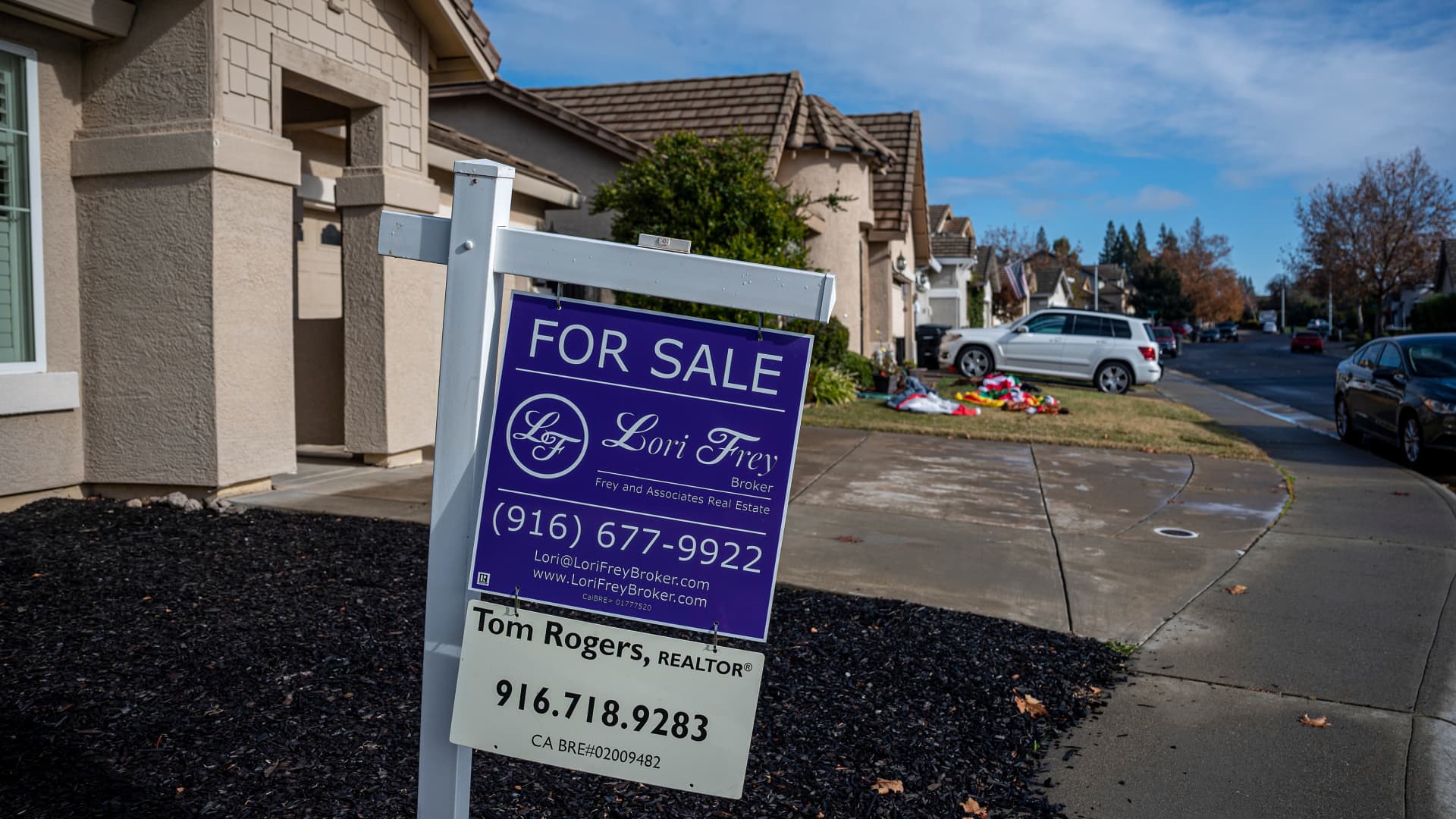
A “For Sale” sign in front of a home in Roseville, California, on Tuesday, Dec. 6, 2022.
David Paul Morris | Bloomberg | Getty Images
Higher mortgage rates weighed on home price gains at the end of 2022. While prices were still higher than they were a year earlier, the rate of increase slowed quickly, according to data released Tuesday.
Home prices in December were 5.8% higher than the previous December, according to the S&P CoreLogic Case-Shiller U.S. National Home Price NSA Index. That is down from a 7.6% annual gain in November. Prices are now 4.4% below their June peak.
For all of 2022, the 5.8% price gain was the 15th best performance in the index’s 35-year history, but was well below 2021’s record-setting 18.9% gain.
The annual increase for the 10-city composite, which includes the New York and Los Angeles metro areas, was 4.4% in December, down from 6.3% in the previous month. The 20-city composite, which includes the Seattle and Dallas areas, marked a 4.6% year-over-year gain, down from 6.8% in the previous month.
Cities still seeing the biggest price gains were Miami, Tampa and Atlanta – up 15.9%, 13.9% and 10.4%, respectively. All 20 cities reported lower prices in the year ending December 2022 versus the year ending November 2022.
“The prospect of stable, or higher, interest rates means that mortgage financing remains a headwind for home prices, while economic weakness, including the possibility of a recession, may also constrain potential buyers,” said Craig J. Lazzara, managing director at S&P DJI. “Given these prospects for a challenging macroeconomic environment, home prices may well continue to weaken.”
Mortgage rates began rising in the spring of last year, with the average rate on the 30-year fixed loan more than doubling to well over 7% by the end of October. Rates then pulled back slightly in December and January, but are now edging closer to 7% again.
Home sales reacting in January, with a sharp jump in properties going under contract, but that is unlikely to continue in February with rates higher again and still very little on the market for sale.
“There is still a lot of uncertainty in the market. Weekly data on buyer activity indicates that homebuyers may be watching mortgage rates closely. Sellers will need to price their homes appropriately to attract buyers and, as a result, we likely will see a continued decline in home price growth through the first quarter of the year,” said Lisa Sturtevant, chief economist at Bright MLS.







